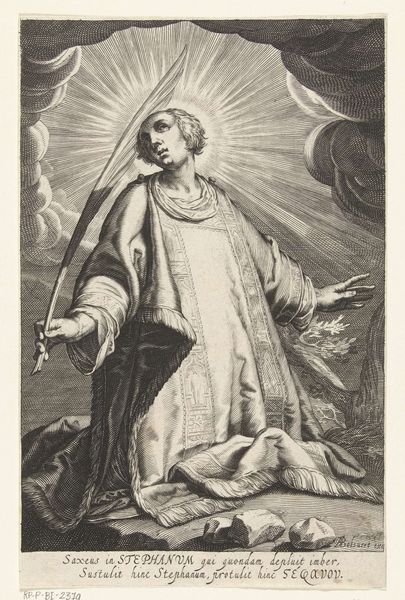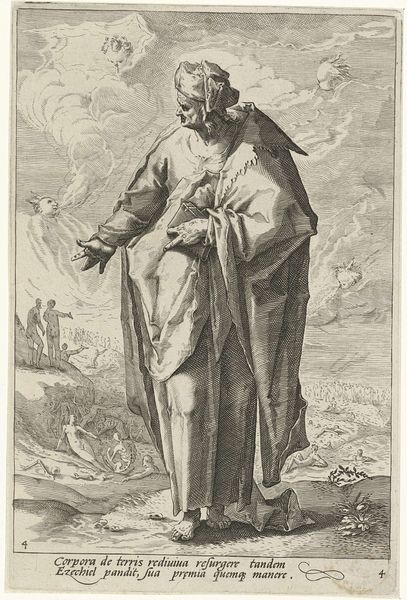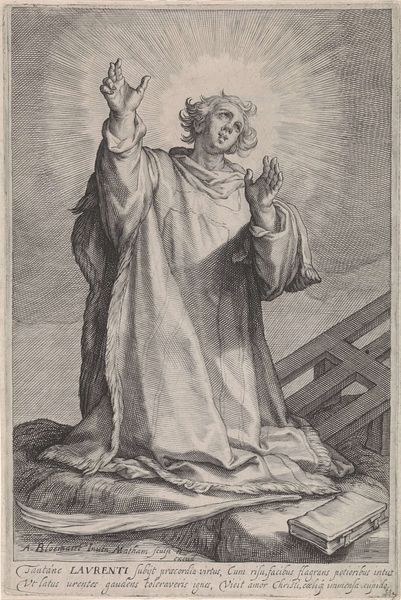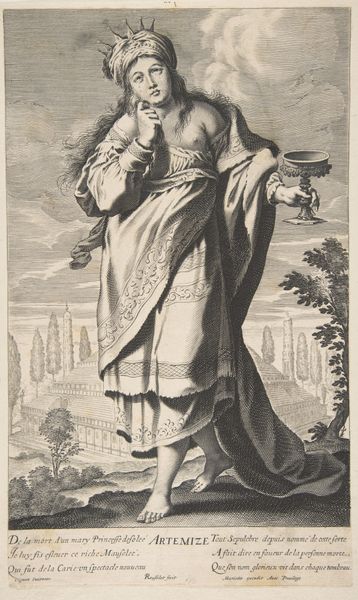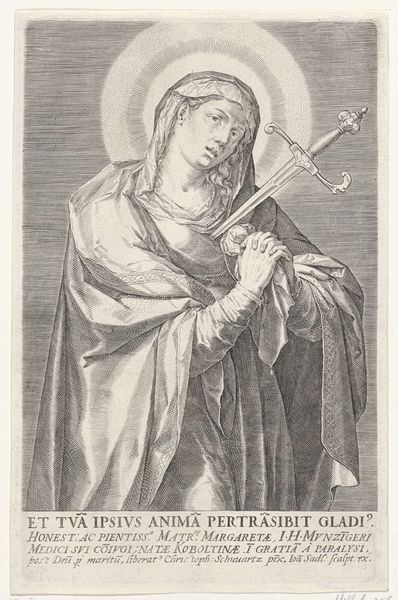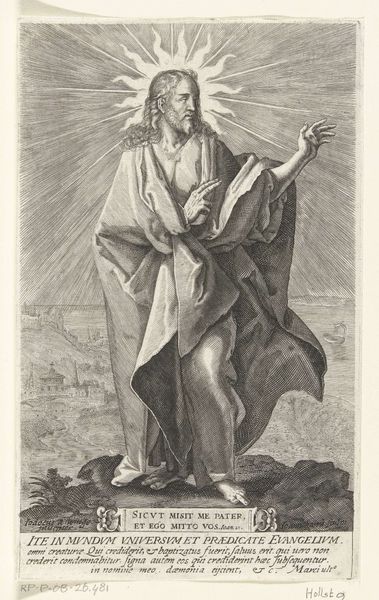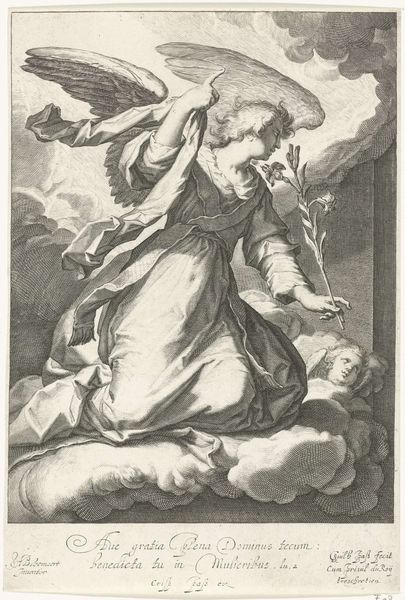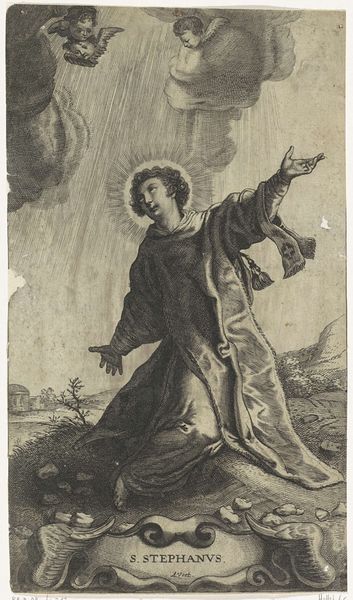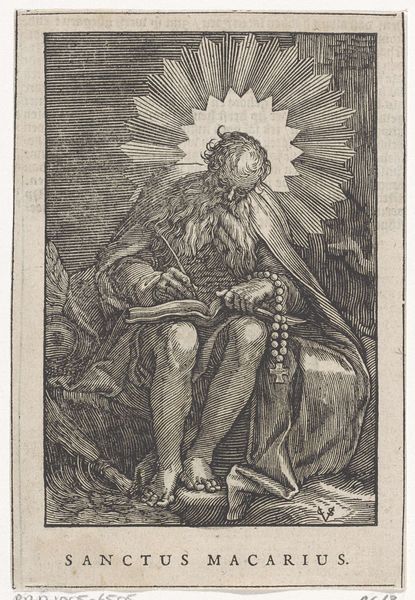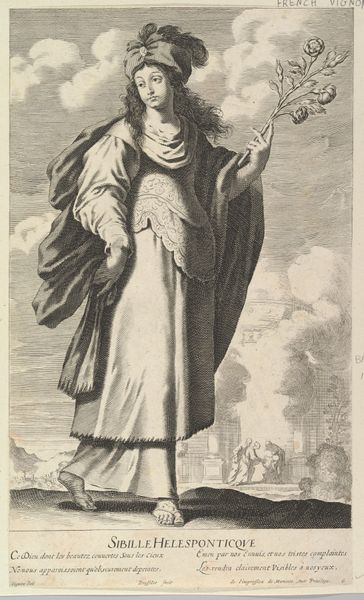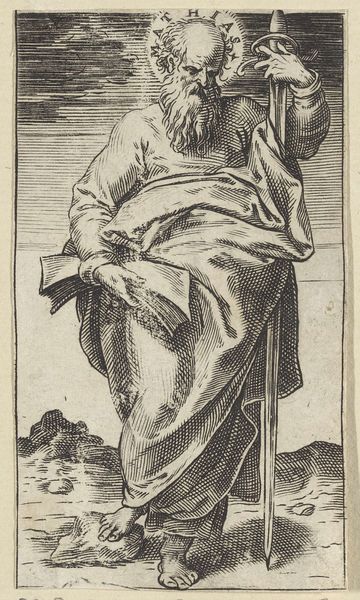
engraving
portrait
baroque
figuration
line
portrait drawing
history-painting
engraving
Dimensions: height 238 mm, width 157 mm
Copyright: Rijks Museum: Open Domain
Curator: Looking at this engraving, likely created between 1605 and 1615, we see Jacob Matham’s rendering of "H. Stephanus." It resides here at the Rijksmuseum. Editor: It's immediately striking—a figure bathed in divine light, kneeling, his face upturned in what seems to be ecstatic communion. But the monochromatic nature, typical of engravings, gives it a somber feel too, wouldn't you say? Curator: Indeed. Matham's positioning this piece within a specific cultural milieu; engravings like this often circulated as devotional images and served a didactic purpose. They reinforce and were tools for Catholic dogma during the Counter-Reformation. The style also connects to this religious fervor by showing Baroque drama with a high level of detail, something particularly important for reaching wider audiences at the time. Editor: The figure's garments, so meticulously etched, draw attention to textures and folds, underscoring his earthly presence, yet that light source completely overwhelms this grounding. Those rocks near him have such a visual weight to them and they're placed directly next to a bible, it must mean something. Curator: Precisely. These objects around him serve as iconographic clues for interpreting his martyrdom: The stones refer to his stoning, as well as referencing his strength while the book symbolizes that St. Stephanus was a learned man, skilled in scripture and interpretation. By the look on Stephanus' face and hand gestures, this appears to be shortly before he faces his attackers, marking that symbolic bridge between life and the afterlife. Editor: And look how the light falls—it draws us not just to his face but through it, beyond. The composition creates this sense of transcendence. It feels as if his suffering is opening him to divine revelation, something beautiful but also very severe and frightening, it adds so much complexity to the scene. Curator: Yes, that interplay between suffering and spiritual triumph was the bedrock of much Baroque imagery, intended to evoke both empathy and awe in viewers. Seeing how it creates a long lasting emotional and intellectual engagement with audiences does it justice. Editor: It truly invites contemplation on the symbolic resonance embedded within these stark lines. Curator: A beautiful illustration, capturing not just a moment but an enduring message.
Comments
No comments
Be the first to comment and join the conversation on the ultimate creative platform.
